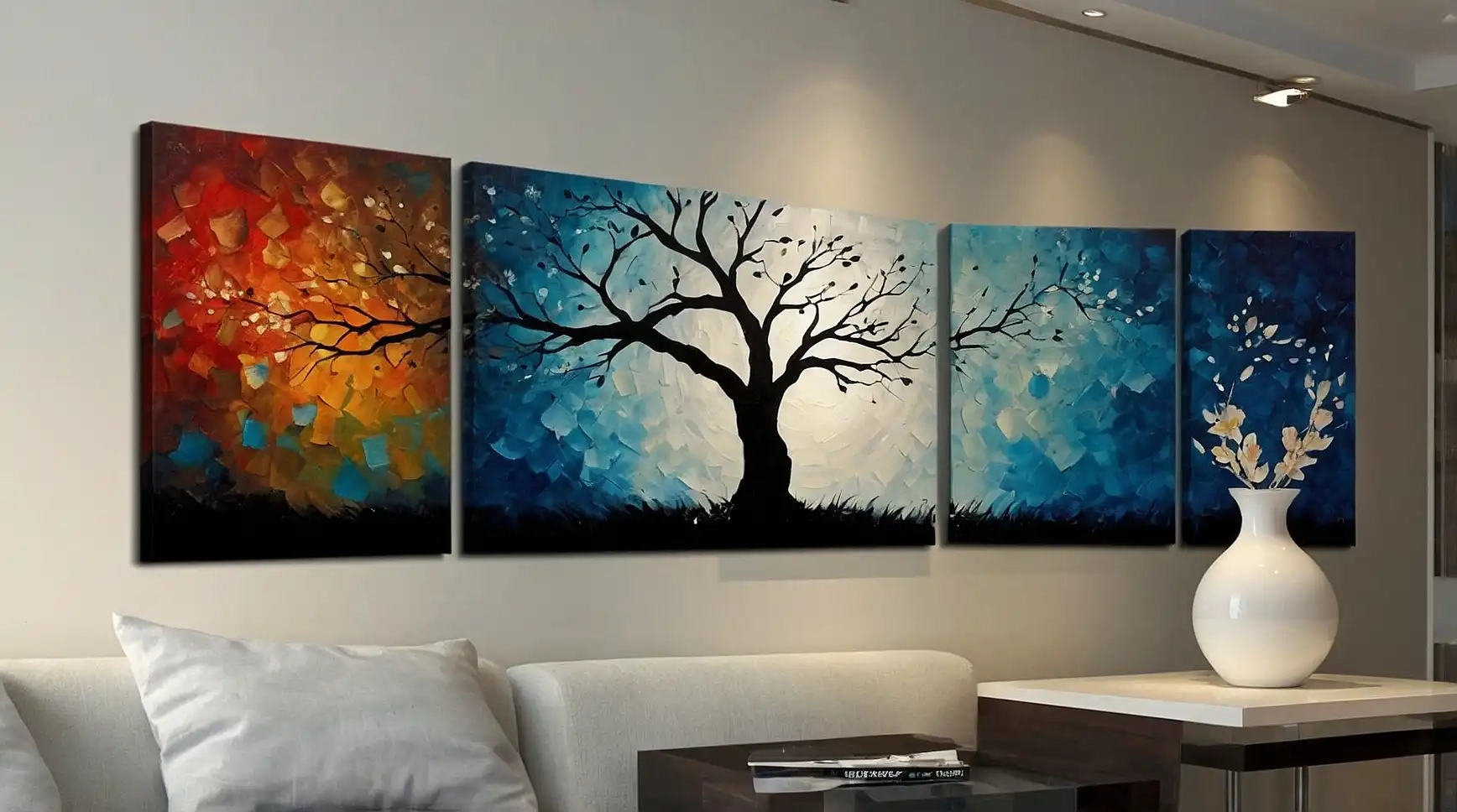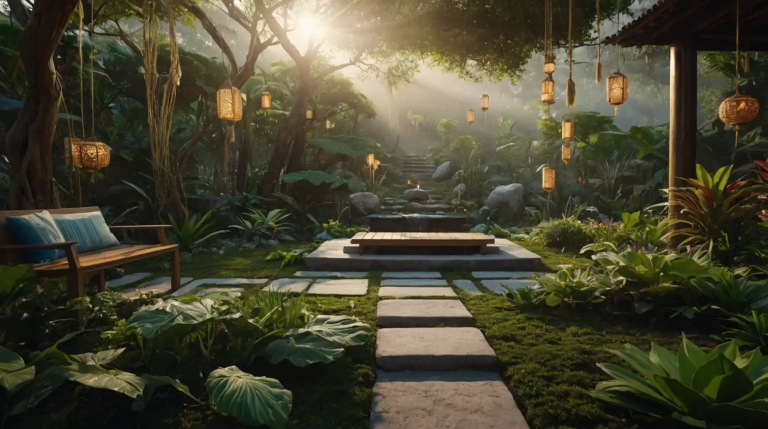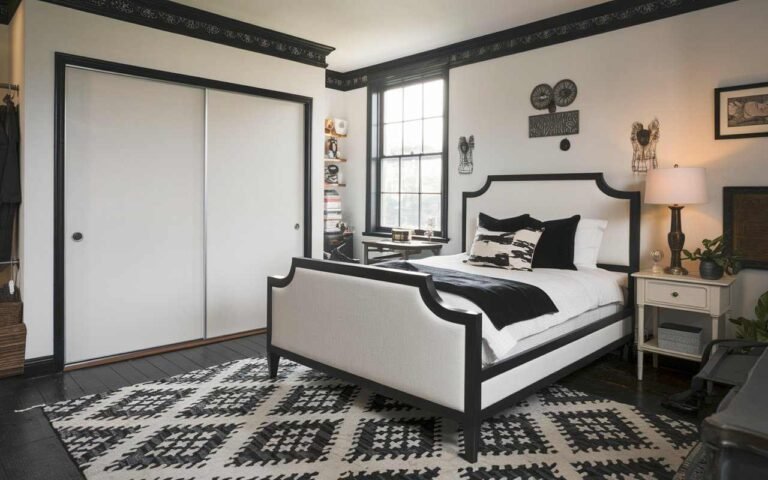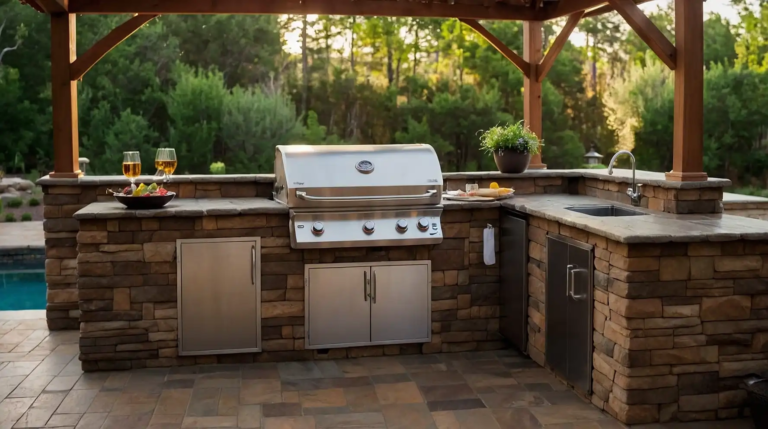21 Easy DIY Canvas Painting Ideas That Look Professional Even For Beginners
Canvas painting offers a perfect creative outlet for expressing yourself, decorating your space, or simply relaxing after a busy day.
You don’t need professional training to create beautiful art—just a willingness to experiment and have fun.
With the right techniques and ideas, even complete beginners can create impressive canvas pieces.
These projects require minimal supplies and are forgiving enough for first-time painters.
Ready to unleash your inner artist? Try these 21 beginner-friendly canvas painting ideas that produce stunning results without requiring advanced skills or expensive equipment.
1: Ombre Sunset Gradient

Create a stunning sunset effect by blending colors that gradually transition from one to another.
Start with dark purple or blue at the top, blending into pink, orange, and finally yellow at the bottom.
Keep your canvas wet as you work to allow colors to blend smoothly. Add silhouettes of trees, mountains, or birds in black once the background dries for a dramatic effect.
This technique teaches color blending while producing a piece that looks far more complex than it actually is to create.
2: Abstract Pour Painting

Try acrylic pouring for instant abstract masterpieces without brushwork.
Mix acrylic paint with pouring medium, then pour multiple colors onto your canvas and tilt to create mesmerizing patterns.
Experiment with different color combinations—metallic with black create elegant designs, while rainbow colors produce playful results.
Add silicone drops to your mixture for fascinating cells and bubbles.
This technique relies on chemistry and gravity rather than painting skills, making it perfect for beginners seeking impressive results.
3: Minimalist Mountain Landscape

Create a striking mountain scene using painter’s tape to form sharp, geometric mountain peaks. Apply tape in triangular formations, then paint the “sky” in your chosen color.
Remove the tape once dry and fill in the mountains with white, gray, or black for a modern look. Add small details like tiny trees or a cabin for scale if desired.
This project teaches you how to use painter’s tape effectively while creating a contemporary piece worthy of gallery walls.
4: Starry Night Sky

Paint a dark blue or black background, then use various techniques to add stars.
Try splattering white paint with a toothbrush for distant stars or use the end of a paintbrush for larger ones.
Add dimension by including different star sizes and brightness levels.
Include a moon or planet by reserving a circle of canvas before painting the background or adding it after with light colors.
This celestial scene teaches you different mark-making techniques while creating a magical nighttime atmosphere.
5: Fingerprint Dandelion

Create whimsical dandelions by painting a simple stem and seed head center, then use your fingertips dipped in white or yellow paint to create the seed puffs radiating outward.
Paint a simple green stem with a small brush before adding the fingerprint seeds.
Choose a background color that contrasts well—light blue, sunset colors, or even black work beautifully.
This playful technique produces charming results while allowing you to create art in a tactile, intuitive way.
6: Tape-Resist Geometric Pattern

Create sharp-edged geometric patterns by applying painter’s tape in various configurations before painting.
Triangles, chevrons, or simple stripes all work beautifully with this technique. Choose 2-4 complementary colors plus a background shade.
Apply the background color first, add tape once dry, then apply your pattern colors and remove tape while still slightly wet.
This project teaches precision and color theory while producing modern, graphic art suitable for contemporary spaces.
7: Simple Silhouette Scene

Create dramatic artwork by painting a bold background color, then adding black silhouettes of recognizable shapes.
Try trees, city skylines, animals, or human figures for striking results. Print reference images and trace their outlines for more accurate silhouettes.
The high contrast between background and foreground creates instant visual impact even with minimal painting skills.
This technique teaches you to focus on shapes rather than details, a fundamental skill in artistic development.
8: Layered Abstract Landscape

Create an abstract landscape using horizontal bands of color to represent sky, mountains, and water.
No precision required—the beauty comes from the interaction between color blocks.
Start with the sky at the top, blending downward into mountain colors in the middle, then water tones at the bottom.
Use a dry brush technique at the edges where colors meet for a natural transition.
This simplified approach to landscape painting teaches color relationships while producing a sophisticated, contemporary piece.
9: Word Art or Quote

Paint a solid background color, then add a meaningful word or short quote in contrasting colors.
This personalized art adds inspiration and meaning to your space with minimal painting skills.
Use letter stencils if you’re not confident in your freehand lettering. Alternatively, write your quote in pencil first, then carefully fill in with paint using a small brush.
This technique combines typography with painting for a piece that’s both decorative and personally significant.
10: Stenciled Mandala Pattern

Create intricate-looking mandalas without advanced skills by using purchased stencils or making your own from cardboard.
The resulting geometric patterns look impressively complex.
Choose contrasting colors for background and mandala design for maximum impact.
Apply paint through the stencil with a nearly dry sponge for clean edges without seepage.
This project teaches you about symmetry and pattern while producing a meditation-inspired piece suitable for any room.
11: Watercolor Effect with Acrylics

Achieve the delicate look of watercolors using more forgiving acrylic paints. Simply dilute acrylics with water for a translucent effect that’s perfect for flower studies or landscapes.
Work from light to dark, allowing layers to dry between applications. The water-thinned paint creates beautiful bleeds and blooms similar to traditional watercolor techniques.
This approach teaches paint consistency control while introducing you to the beautiful effects possible with thinned acrylics.
12: Simple Floral Still Life

Paint a small collection of simplified flowers in a vase for a classic subject that never goes out of style.
Focus on basic shapes rather than complex details for beginner-friendly results.
Start with a simple background, then add your vase shape. Create flowers using basic circular or petal shapes in different colors, adding stems and leaves as final touches.
This traditional subject teaches composition and color harmony while producing timeless decorative art.
13: Monochrome Color Study

Create a sophisticated piece using just one color plus white and black to create various tints and shades.
This limited palette produces cohesive, elegant results even for beginners.
Choose any color you love—blue creates calming seascapes, while red or orange produces energetic, warm compositions.
Create an abstract design or simple landscape using your chosen monochrome scheme.
This exercise teaches value control—a fundamental artistic skill—while creating a mature, coordinated piece.
14: Textured Canvas with Modeling Paste

Create dimensional art by applying modeling paste through stencils or with a palette knife before painting.
Once dry, paint over the textured surface for an impressive mixed-media effect. Apply the paste in patterns or to create raised elements like flower petals or leaves.
Once completely dry, paint the entire canvas, letting the raised texture catch the paint differently than flat areas.
This technique introduces texture as a design element while producing professional-looking dimensional artwork.
15: Abstract Alcohol Ink Landscape

Create dreamlike landscapes using alcohol inks dropped onto a sealed canvas.
The inks flow and blend in unpredictable ways, creating ethereal scenes with minimal technical skill.
Seal your canvas with gesso first, then drop alcohol inks in landscape-suggesting colors.
Tilt the canvas or direct the flow with compressed air for mountain-like formations and flowing “water” effects.
This experimental technique embraces controlled randomness while producing vibrant, contemporary art.
16: Negative Space Painting

Create intriguing designs by painting around shapes rather than the shapes themselves.
The unpainted canvas becomes your subject while the painted areas become the background.
Start by lightly sketching your subject—like leaves, feathers, or flowers.
Paint the background around these shapes, leaving the canvas bare to define your subject through negative space.
This reverse approach teaches you to see shapes differently while creating elegant, sophisticated compositions.
17: Impressionist Dot Technique

Create vibrant scenes using small dots of pure color placed side by side, inspired by pointillism.
When viewed from a distance, the dots optically blend to create a luminous effect. Choose a simple reference image with clear color areas.
Apply dots of pure, unmixed color using the end of a paintbrush or cotton swab, placing complementary colors next to each other.
This technique teaches color theory while creating vibrant pieces with a distinctive textural quality.
18: Simple Seascape Horizon

Paint a calming seascape with a simple horizon line dividing sky and water.
This fundamental composition requires minimal technique but produces powerful, evocative results.
Create your horizon line about one-third from the top or bottom of your canvas.
Paint the sky in one shade of blue, the water in a slightly different blue, then blend where they meet.
This exercise teaches you about perspective and atmospheric effects while creating serene, meditative artwork.
19: Leaf Print Canvas

Create nature-inspired art by painting real leaves and pressing them onto your canvas like stamps. The natural details transfer beautifully for organic, botanical prints.
Collect interesting leaves of various shapes and sizes. Apply paint to one side of each leaf, then press paint-side down onto your canvas, rolling gently to transfer the details.
This technique incorporates natural elements while teaching you about composition and arrangement.
20: Galaxy Space Scene

Create cosmic galaxy paintings by building layers of dark background colors, then adding nebula effects with sponged-on brighter colors and white speckled stars.
Start with a black background, then add deep blues and purples in circular motions.
Sponge pink, blue, and purple for nebula clouds, then splatter white paint for stars of various sizes.
This dramatic technique teaches layering and special effects while producing awe-inspiring cosmic landscapes.
21: Masked Initial or Shape

Create personalized art by applying painter’s tape or a stencil of your initial or a meaningful shape, then filling the surrounding canvas with colorful patterns or brush strokes.
Secure your stencil or tape in the shape of your chosen letter or design.
Apply various colors and patterns around it, then remove the mask to reveal your shape defined by the unpainted canvas.
This customizable project combines several techniques while creating meaningful, personalized wall art.
Conclusion
Start your painting journey with these beginner-friendly projects that deliver impressive results.
Remember that imperfections add character—embrace the learning process and enjoy creating unique pieces that express your personal style.







